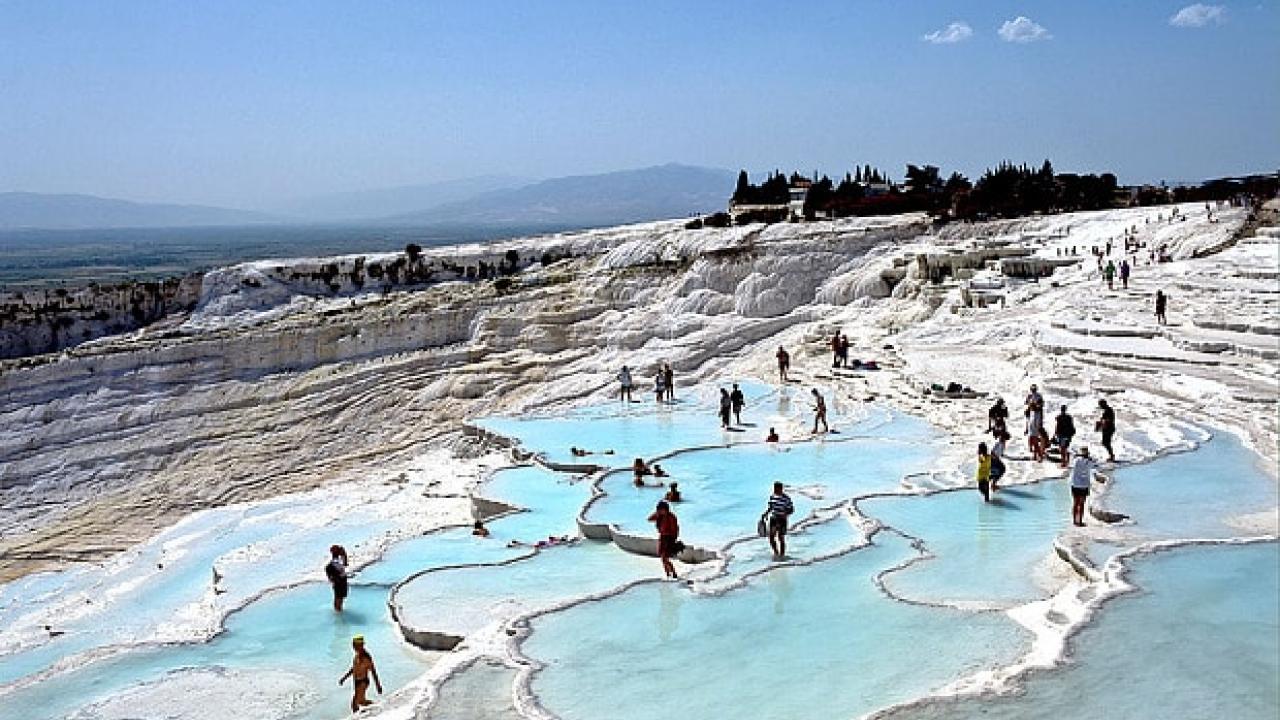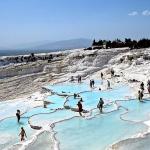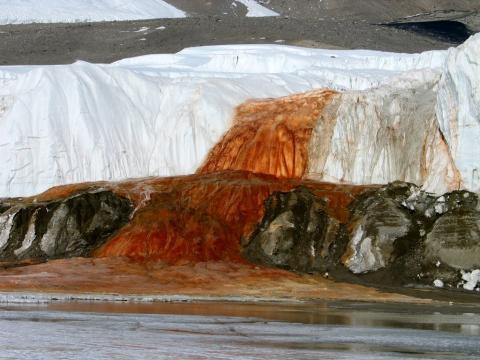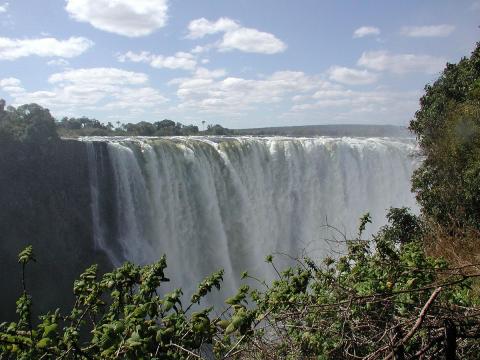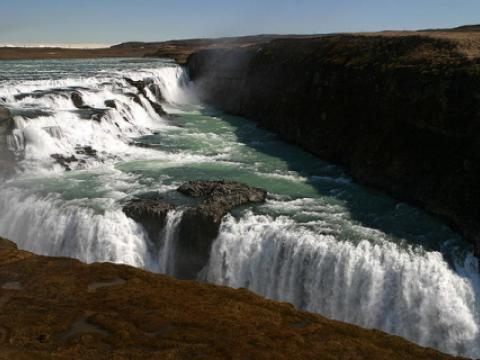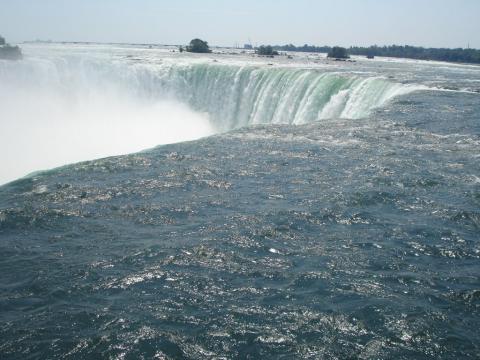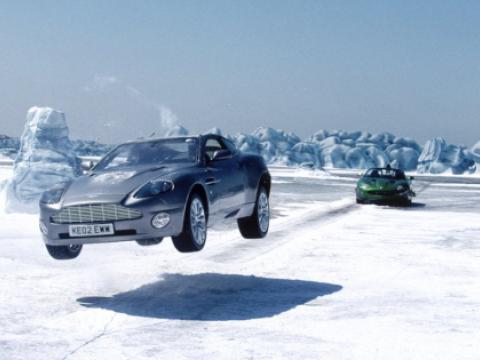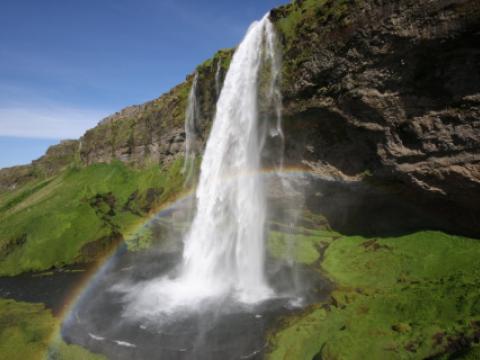Location
Pamukkale is an amazing display of natural hot water pools in Denizli Province, Turkey. These surreal, brilliant white travertine terraces and warm, limpid pools hang from the rim of a steep valley side like a petrified cascade of a waterfall.
Pamukkale's terraces are made of travertine, a sedimentary rock deposited by water from the hot springs. In this area, there are 17 hot water springs in which the temperature ranges from 35 °C (95 °F) to 100 °C (212 °F). The water that emerges from the spring is transported 320 metres to the head of the travertine terraces
Pamukkale, literally private://Cotton Castleprivate:// in Turkish, is also the site of the remarkably well-preserved ruins of the Greek-Roman city of Hierapolis.
By train
The nearest train station is in Denizli, which currently has services from Izmir only.
By bus
Bus to Pamukkale/Denizli can be found from almost all the cities of Turkey. Bus services include water, hot drinks and a snack. There are virtually no bus companies that take you directly to Pamukkale despite what the ticket sellers tell you. The bus will drop you in Denizli and then you have to get on the minibus to Pamukkale (about 20 km away).
From Denizli
From nearby Denizli frequent mini-buses serve the village of Pamukkale in a 20 minute ride. They leave from #75 in the bus terminal and it costs around 3.50 TL per trip.
Entrance fee
The entrance ticket is 35 Turkish Lira TRY (about 9 Euros or 10 US Dollars) and free for children under 18.
Opening hours
From April 15 till October 2 – Open from 08:00 to 21:00 every day
From October 3 till April 14 – Open from 08:30 to 17:00 every day







